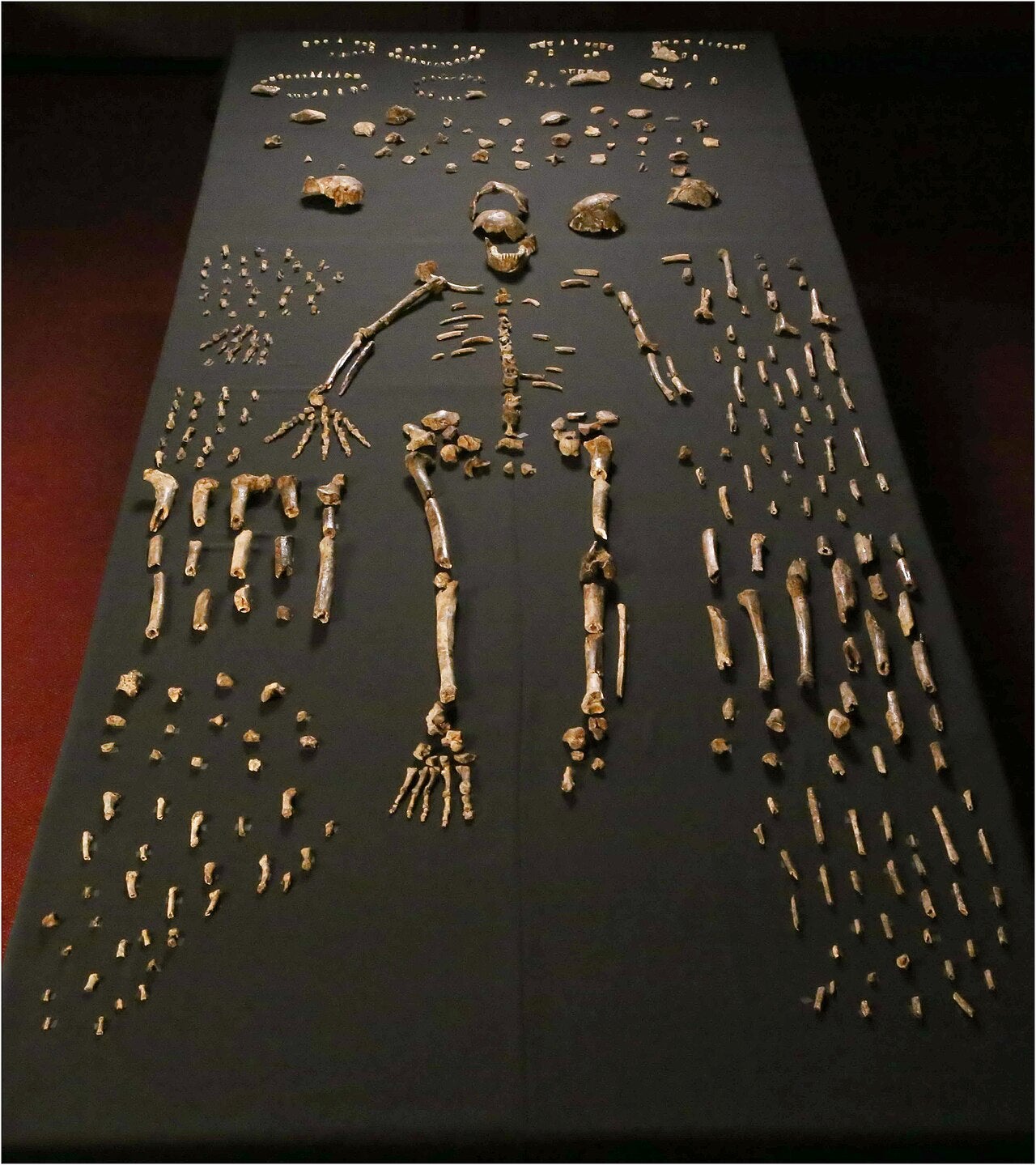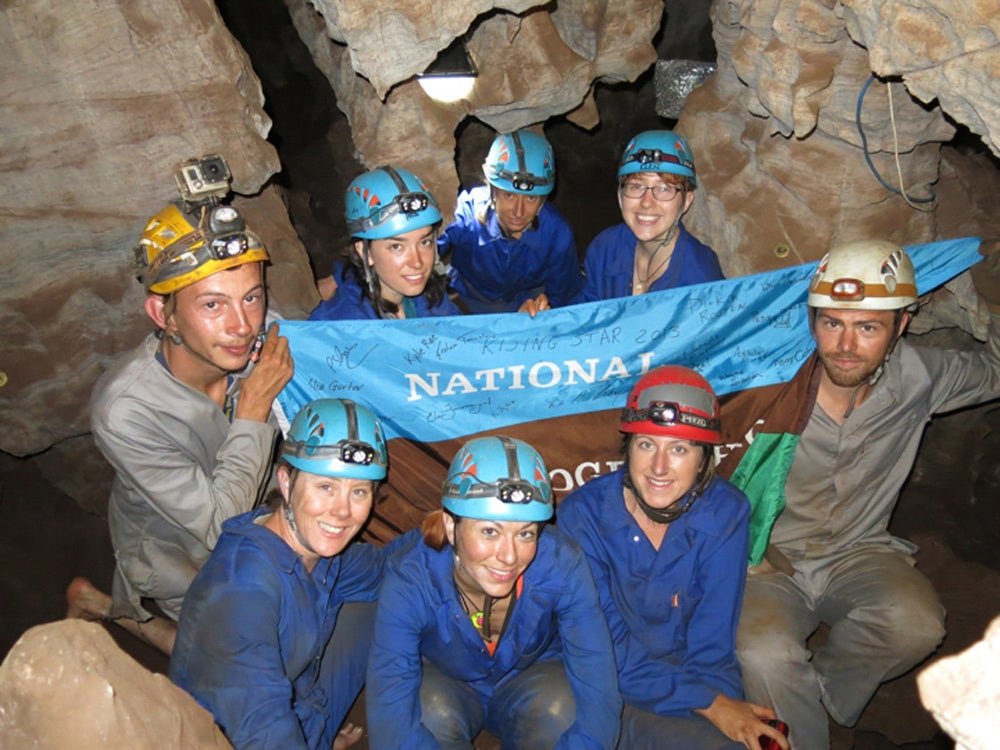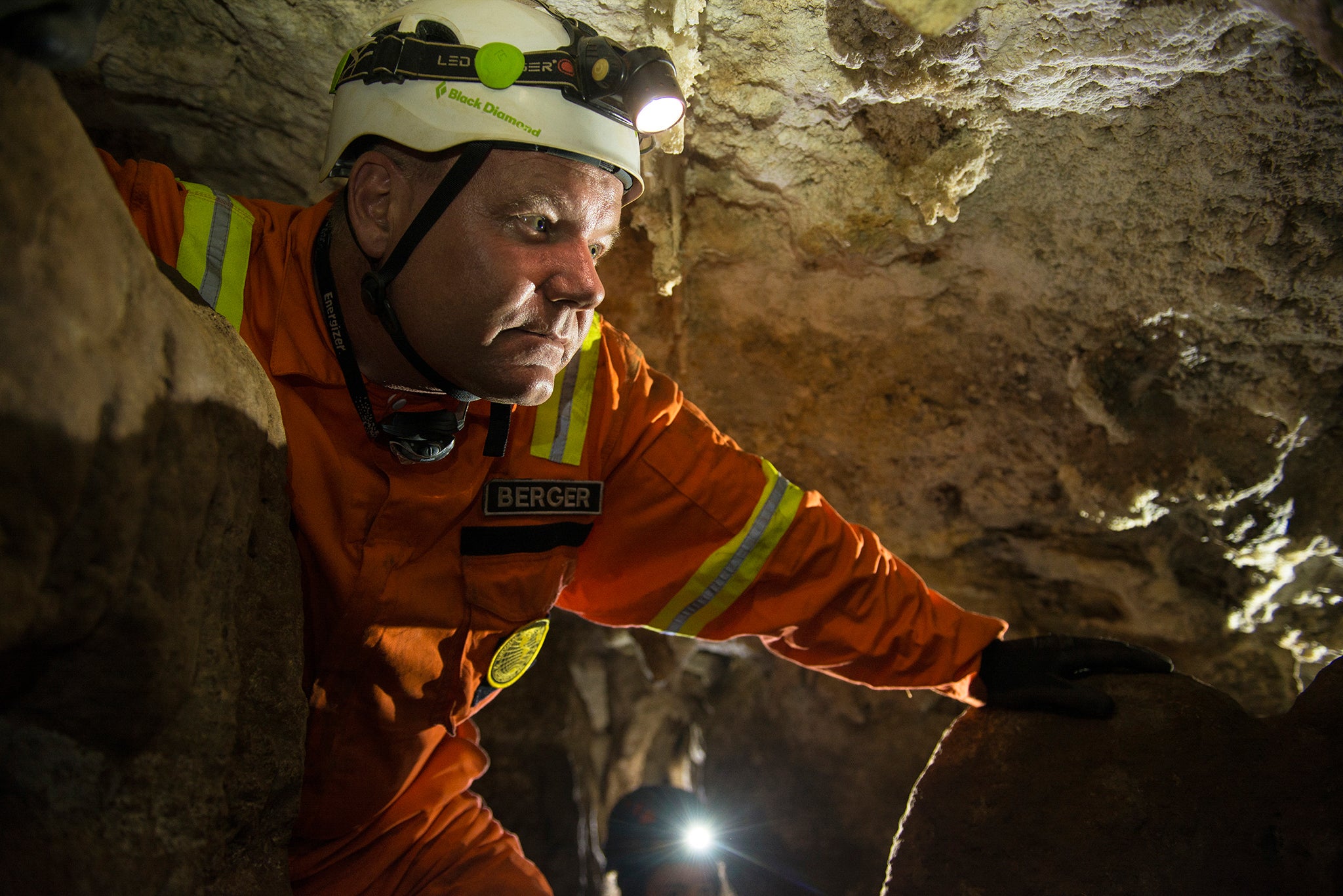Underworld discovery casts doubt on our understanding of human evolution
Did an extinct ‘small-brained ape-man’ species develop a sophisticated culture millennia before we did?
Scientists are planning to solve one of the world’s greatest archaeological mysteries.
Using an unparalleled range of tests, experts are investigating whether a group of ‘ape-men’ succeeded in creating a complex human-like culture - potentially thousands of years before our own species, Homo sapiens, managed to do so.
Evidence, gathered by the scientists, suggests that a complex ‘ape-man’ culture with some practices and belief systems normally only associated with modern humanity, emerged in southern Africa around 300,000 years ago.

Adding to the mystery is the fact that the now long-extinct species behaved in several key ways like modern humans - and yet appears to have been able to do that with brains which were only a third the size of ours.
The discovery and the ongoing research threatens to overthrow key aspects of how the scientific world understands human evolution.
The evidence assembled so far is beginning to suggest that these small-brained ‘ape-men’ may have been able to do seven remarkable things:
-Envisage an afterlife (in other words, a belief that some form of existence continues beyond death).
-Believe that an afterlife occurs in some sort of ‘underworld’, located beneath (rather than on or above) the world of the living. That implies that they may have developed some very embryonic sense of cosmology.
-Conceive the idea of physically burying their dead - in that ‘underworld’.
-Give grave goods to dead members of their community - an apparent act that implies that they may have believed that the dead would somehow be able to use them in an afterlife.
-Carry out potential rituals - specifically funerary meals - inside their ‘underworld’.
-Create rudimentary art (abstract designs) around the entrance to at least one of the burial chambers in that ‘underworld’.
-Plan some sort of relatively complex lighting system (either a succession of small fires and/or torches) to enable them to penetrate their ‘underworld’ and take their dead there.

Their ‘underworld’ was located deep underground in a complex subterranean system, known as Rising Star Cave, in what is now the north-east part of South Africa. To reach the main chamber (accommodating what appear to be burials) within that system involved a 130 metre long subterranean journey.
The discovery have been met with excitement by some scientists but with scepticism from others.
“We know that what we’re discovering breaks totally new ground - and is therefore likely to be controversial. That’s why we are deploying every possible type of investigative technology to ensure that the maximum amount of additional evidence can be found,” said the leader of the Rising Star Cave investigation, National Geographic and University of Witwatersrand palaeoanthropologist, Professor Lee Berger, who with co-investigator, human evolution expert Professor John Hawks, has just published a detailed National Geographic book on the discoveries, entitled Cave of Bones.
Preliminary scientific tests have already been carried out - but large numbers of other tests are now being planned to confirm or amend initial conclusions.
The most controversial aspect of the species (named Homo naledi by the scientists) is the creature’s brain size - barely bigger than that of a chimpanzee.
So a crucial part of the ongoing investigation will be further detailed examination of the species’ skull fragments, found in the cave complex, to try to better understand the structure and organisation of their brains. So far remains of at least 30 individuals have been found there - and it’s likely that dozens more will be discovered over the coming months and years.
Certainly, despite its small brain size, the creature had very well-developed human-like frontal lobes, the precise area of the brain known to be involved with planning and language.
To make the discovery less controversial, the scientists will need to provide additional evidence that brain size is not necessarily crucial in terms of cognitive ability. That would involve demolishing literally centuries of scientific belief.
The investigation so far strongly suggests that Homo naledi corpses were deliberately brought into the cave system and deliberately buried there. The evidence gathered so far points to living members of that species being responsible for doing that.

One Homo naledi individual (a child) seems to have been deliberately buried with a grave good - a probable tool placed in his or her right hand.
Now, further excavations are planned which may yield additional such grave goods in other graves in the Homo naledi ‘underworld’.
Any such discoveries would further bolster the idea that Homo naledi had a concept of life after death.
Key to the investigation will be dating the hearths used to cook food (including antelope) in the pitch-dark subterranean complex. Dating them is crucial in order to definitively confirm that the hearths were made in the Homo naledi era. Using a dating system, known as electron spin resonance, it may be possible to date the enamel of teeth from those antelopes and other animals. What’s more the archaeologists will try to use another dating system to determine the age of a layer of solidified lime which overlies some of the hearths.
The individuals cooking the antelope and other meat also seem to have deliberately broken those animals’ long bones, presumably to extract the very nutritional marrow from inside them. Microscopic analysis of the bone breaks will be carried out to try to prove that they were deliberately broken with a stone tool, rather than accidentally.

Another key part of the investigation will involve detailed geomorphological and other studies of the cave rock faces where what are almost certainly engravings have been discovered. First, the archaeologists will need to prove beyond any doubt that the designs seemingly engraved on those walls could not have been made by erosion or other natural processes.
Then they will need to demonstrate that they were made by tools.
And crucially, the scientists plan to date the apparent engravings by using uranium series dating to reveal the age of patches of stalagmite-like material (calcite) which formed inside the engravings after they were made.
The investigators will also be looking for any traces of surviving Homo naledi DNA associated with the engravings or with any other material adhering to the cave walls. That’s because other, albeit much less ancient, Stone Age art is known to have sometimes been created by using a mixture of pigment and potentially DNA-bearing spit.

“We are currently planning the most ambitious and comprehensive scientific investigation ever carried out on apparent prehistoric engravings. If we can confirm that the patterns on the rock face were most likely created by Homo naledi, they will overturn scientific thinking on the evolution of symbolic thought,” said rock art specialist Genevieve von Petzinger, co-leader of the Spanish-based archaeology group, the First Art Team, which is carrying out the examination of the Rising Star Cave engravings.
One of the most remarkable aspects of the Homo naledi ‘underworld’ is its difficult-to-access location. In order to reach it today involves a 130 metre long 30 minute subterranean journey including around 12 metres crawling through narrow passageways between 15 and 20 centimetres high, before descending down an almost vertical 12 metre long ‘chimney’, with an average width of just 20 centimetres.
Geomorphological surveys of the cave complex suggest that it was almost as challenging back in Homo naledi‘s era. So it would have taken huge determination and, arguably, even ideological vision, for them to take corpses, fire wood, fire brands, and potentially antelope and other meat on such a daunting subterranean journey.
The ten metre high ceiling of the main burial chamber is deep underground - around 35 metres below the outside world with no apparent alternative above ground access.
The importance of the discovery - potentially implying that ‘ape-men’ had religious and even perhaps cosmological concepts about life after death - are so revolutionary that many scientists will find the very concept extremely difficult to accept.

It very substantially blurs the cognitive boundary between our species (Homo sapiens) and our ‘ape-man’ ancestors and predecessors.
And yet, if the ongoing investigations strengthen those revolutionary implications, they may shed fascinating new light on the ultimate origins of how and what modern humans still think and believe.
A majority of the world’s population still believes in an afterlife - and historical and ethnographic evidence clearly shows that very large numbers of ancient human cultures thought that that afterlife was, cosmologically, located beneath the world of the living (rather than on it - or, heaven-style, above it). Perhaps tellingly, it is a global concept.
From at least the 4th Millennium BC, the ancient Sumerians (of southern Iraq) believed in an underworld called Kur (meaning ‘earth/ground’ or ‘mountain’). The ancient Egyptians had an underworld called the Duat, while the ancient Chinese had a similar concept (called the Diyu, literally meaning ‘Earth Prison’ and the Difu, literally meaning the ‘Earth Mansion’). In Hinduism, there is the ancient concept of the Patala (literally ‘that which is below the feet’), while in the Americas, the ancient Maya, the Aztecs and the Incas all had underworld concepts, as did the ancient Celts, Greeks and Romans in Europe, the Polynesians of the Pacific, the Inuit of the Arctic and the peoples of Japan and Korea. In Christianity the concept survives as hell.
Homo naledi‘s apparently sophisticated funerary culture is significant because its the first time that archaeologists have discovered evidence of such behaviour being practiced by a species not closely related to us, Homo sapiens.
Interestingly, some Neanderthals and Homo heidelbergensis communities buried or deposited their dead in caves - as have many modern human (Homo sapiens) cultures from the Stone Age to the present day. In many ancient civilizations worldwide, humans even created artificial caves, if there were no natural ones available.
The ongoing research into the mysteries of Rising Star Cave is likely to shed fascinating new light on the distant origins of human thought and belief systems.

The ultimate implication may affect how we view prehistory going back several million years ago - because Homo naledi was almost certainly not a direct ancestor of ours.
Instead, Homo sapiens is and Homo naledi was probably descended from a common ancestor species long before either existed - so the similarities in belief could be either coincidental or inherited from even deeper prehistory.
Zoological research over recent years has begun to reveal that a number high intelligence animal species (elephants, chimpanzees, monkeys, magpies, dolphins and others) appear to have death-related ‘rituals’ - including standing guard over the dead and in some cases covering the dead with leaves and other material. Additional future research into such animal behaviour may well shed additional light on the very distant origins of modern human and pre-modern-human funerary behaviour.
The Rising Star Cave investigation - which is currently the subject of a one and a half hour long Netflix documentary (Unknown: Cave of Bones) - is multidisciplinary and international, involving archaeologists, physical anthropologists, geomorphologists and other scientists from South Africa, The United states, Canada, China, Nigeria, Germany, the UK, Italy, Spain and Portugal.
Many hundreds of bones of Homo naledi have been found in the cave system in a series of expeditions over the past decade. The engravings have only just been published, as has evidence for the deliberate burial of Homo naledi individuals in the cave. The detailed book on the site, Cave of Bones, was published earlier today, Tuesday.



Join our commenting forum
Join thought-provoking conversations, follow other Independent readers and see their replies
Comments